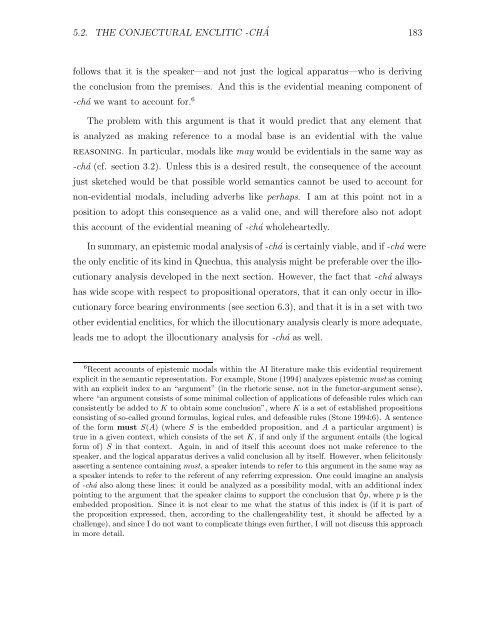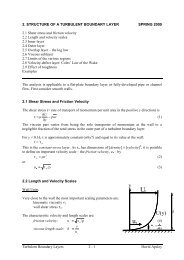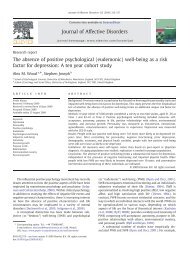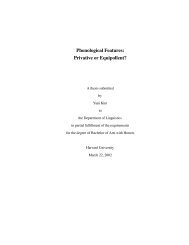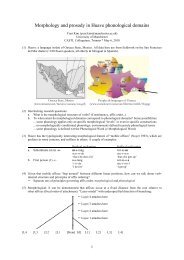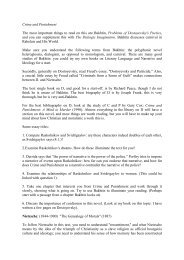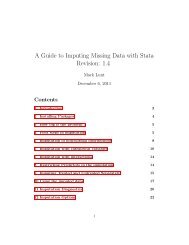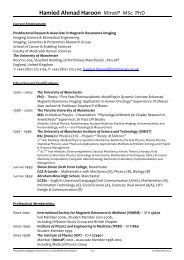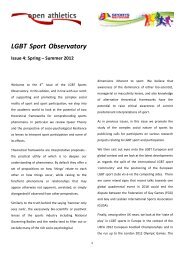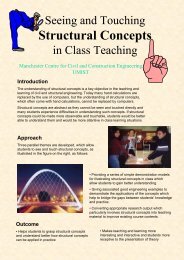semantics and pragmatics of evidentials in cuzco quechua
semantics and pragmatics of evidentials in cuzco quechua
semantics and pragmatics of evidentials in cuzco quechua
Create successful ePaper yourself
Turn your PDF publications into a flip-book with our unique Google optimized e-Paper software.
5.2. THE CONJECTURAL ENCLITIC -CHÁ 183<br />
follows that it is the speaker—<strong>and</strong> not just the logical apparatus—who is deriv<strong>in</strong>g<br />
the conclusion from the premises. And this is the evidential mean<strong>in</strong>g component <strong>of</strong><br />
-chá we want to account for. 6<br />
The problem with this argument is that it would predict that any element that<br />
is analyzed as mak<strong>in</strong>g reference to a modal base is an evidential with the value<br />
reason<strong>in</strong>g. In particular, modals like may would be <strong>evidentials</strong> <strong>in</strong> the same way as<br />
-chá (cf. section 3.2). Unless this is a desired result, the consequence <strong>of</strong> the account<br />
just sketched would be that possible world <strong>semantics</strong> cannot be used to account for<br />
non-evidential modals, <strong>in</strong>clud<strong>in</strong>g adverbs like perhaps. I am at this po<strong>in</strong>t not <strong>in</strong> a<br />
position to adopt this consequence as a valid one, <strong>and</strong> will therefore also not adopt<br />
this account <strong>of</strong> the evidential mean<strong>in</strong>g <strong>of</strong> -chá wholeheartedly.<br />
In summary, an epistemic modal analysis <strong>of</strong> -chá is certa<strong>in</strong>ly viable, <strong>and</strong> if -chá were<br />
the only enclitic <strong>of</strong> its k<strong>in</strong>d <strong>in</strong> Quechua, this analysis might be preferable over the illocutionary<br />
analysis developed <strong>in</strong> the next section. However, the fact that -chá always<br />
has wide scope with respect to propositional operators, that it can only occur <strong>in</strong> illocutionary<br />
force bear<strong>in</strong>g environments (see section 6.3), <strong>and</strong> that it is <strong>in</strong> a set with two<br />
other evidential enclitics, for which the illocutionary analysis clearly is more adequate,<br />
leads me to adopt the illocutionary analysis for -chá as well.<br />
6 Recent accounts <strong>of</strong> epistemic modals with<strong>in</strong> the AI literature make this evidential requirement<br />
explicit <strong>in</strong> the semantic representation. For example, Stone (1994) analyzes epistemic must as com<strong>in</strong>g<br />
with an explicit <strong>in</strong>dex to an “argument” (<strong>in</strong> the rhetoric sense, not <strong>in</strong> the functor-argument sense),<br />
where “an argument consists <strong>of</strong> some m<strong>in</strong>imal collection <strong>of</strong> applications <strong>of</strong> defeasible rules which can<br />
consistently be added to K to obta<strong>in</strong> some conclusion”, where K is a set <strong>of</strong> established propositions<br />
consist<strong>in</strong>g <strong>of</strong> so-called ground formulas, logical rules, <strong>and</strong> defeasible rules (Stone 1994:6). A sentence<br />
<strong>of</strong> the form must S(A) (where S is the embedded proposition, <strong>and</strong> A a particular argument) is<br />
true <strong>in</strong> a given context, which consists <strong>of</strong> the set K, if <strong>and</strong> only if the argument entails (the logical<br />
form <strong>of</strong>) S <strong>in</strong> that context. Aga<strong>in</strong>, <strong>in</strong> <strong>and</strong> <strong>of</strong> itself this account does not make reference to the<br />
speaker, <strong>and</strong> the logical apparatus derives a valid conclusion all by itself. However, when felicitously<br />
assert<strong>in</strong>g a sentence conta<strong>in</strong><strong>in</strong>g must, a speaker <strong>in</strong>tends to refer to this argument <strong>in</strong> the same way as<br />
a speaker <strong>in</strong>tends to refer to the referent <strong>of</strong> any referr<strong>in</strong>g expression. One could imag<strong>in</strong>e an analysis<br />
<strong>of</strong> -chá also along these l<strong>in</strong>es: it could be analyzed as a possibility modal, with an additional <strong>in</strong>dex<br />
po<strong>in</strong>t<strong>in</strong>g to the argument that the speaker claims to support the conclusion that ¦p, wherep is the<br />
embedded proposition. S<strong>in</strong>ce it is not clear to me what the status <strong>of</strong> this <strong>in</strong>dex is (if it is part <strong>of</strong><br />
the proposition expressed, then, accord<strong>in</strong>g to the challengeability test, it should be affected by a<br />
challenge), <strong>and</strong> s<strong>in</strong>ce I do not want to complicate th<strong>in</strong>gs even further, I will not discuss this approach<br />
<strong>in</strong> more detail.


